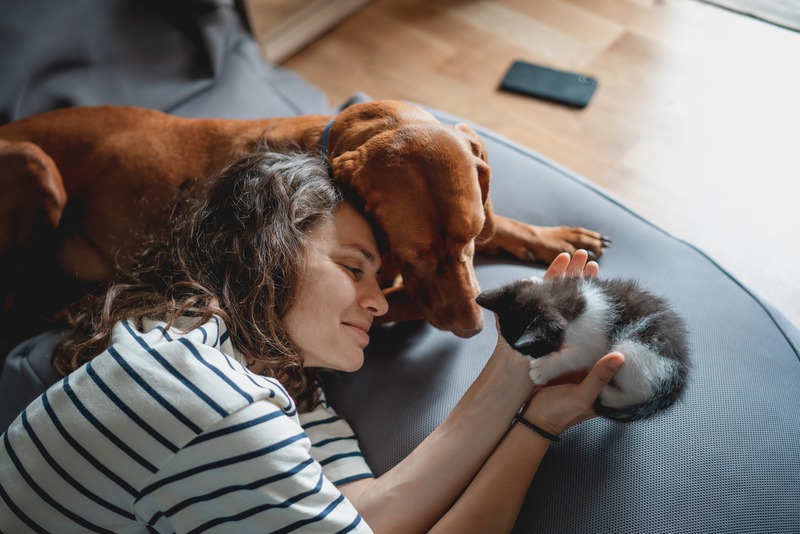When the thermometer rises, the risk of heatstroke in pets can become a critical concern. Our beloved animals rely on us to protect them from the dangers of overheating, and should the unthinkable occur, it’s essential to understand how professionals tackle this serious condition. With the well-being of our furry friends at the forefront, let’s delve into the diligent process vets employ to bring them back to health.
Early Detection and Immediate Response
A prompt response is crucial in the battle against heatstroke. Recognizing the symptoms early can be lifesaving. Signs to watch for include:
-
Excessive panting and drooling
-
Increased heart rate
-
Weakness or collapse
Pet owners should act rapidly, initiating cooling methods and contacting their vet immediately. Cool, not cold, water can be applied to the pet’s body and it can be moved to a shaded area. Nevertheless, these first-aid methods are only a temporary fix until professional help is received.
Assessment Upon Arrival at the Clinic
As soon as a pet with potential heatstroke arrives at the clinic, vets perform a thorough examination. They assess vital signs such as temperature, heart rate, and gum color, which indicate the severity of the condition. Blood tests are often deployed to determine organ function, as heatstroke can cause damaging effects beyond overheating.
Such urgent situations also underscore the importance of routine preventive care. Regular visits for a veterinary checkup in Seattle, WA, for instance, can help ensure your pet’s resilience and provide education on preventing heat-related emergencies.
Stabilization and Cooling Techniques
Veterinarians leverage specific cooling techniques to lower the pet’s body temperature gradually. Rapid cooling can cause other complications, hence the need for a measured approach. Methods used in a controlled setting include:
-
Wetting the pet with lukewarm water and using fans to increase air circulation
-
Administering cool intravenous fluids to internally lower body temperature
-
Applying wet towels to areas with less fur, such as the paws and groin
During this phase, continuous monitoring is imperative to ensure the animal’s body temperature does not fall too quickly or too far below normal levels.
Addressing Secondary Complications
Heatstroke can cause a cascade of secondary complications, such as kidney failure or coagulation disorders. After stabilizing the pet, vets focus on managing and treating these secondary issues. This may involve administering medications, additional fluids, or supportive therapies tailored to the pet’s individual needs.
Ongoing Monitoring and Supportive Care
The recovery phase from heatstroke is just as significant as the initial treatment. Vets continue to monitor the pet closely, looking out for signs of delayed complications. Facility staff provide continuous care, ensuring the pet receives hydration and rest, and that its body temperature remains steady. The length of hospitalization can vary depending on the severity of the heatstroke and how the pet responds to treatment.
Education and Prevention Strategies
After a pet survives heatstroke, vets take the opportunity to educate owners on prevention strategies. These might include:
-
Never leaving pets in a parked car, even on seemingly mild days
-
Ensuring pets always have access to shade and freshwater
-
Avoiding rigorous exercise during peak heat times
Through client education, the goal is to prevent a recurrence and encourage safe practices that protect pets from the risks of heat exposure. Clinics in the area, such as those run by vets in North Seattle, are well-equipped to offer these advanced levels of care and ensure the best possible outcome for the pet.
Advanced Interventions for Severe Cases
If a pet is in a very serious or dangerous health situation, veterinarians – animal doctors – might use special treatments. These advanced options help pets with severe problems. Here’s a closer look at the kinds of advanced care that may be used for your pet:
-
Specialized equipment: Vets can use special machines to help control a pet’s body temperature. This kind of cooling gear can be important if a pet is too hot and cannot cool down on their own.
-
Oxygen therapy for breathing problems: If a pet can’t breathe well, vets might use oxygen therapy. This helps give the pet enough air and can be very important in helping them recover from respiratory issues.
-
Helping pets with brain or nerve problems: If a pet’s brain or nerves are affected, the vet may give medicines to prevent seizures. Pets with these issues often need to be watched very closely to make sure they are safe and getting the right care.
Vets who provide advanced treatments have special knowledge about how to help pets in very bad health. They do everything they can to help these pets get better.
Specialist Interventions
When a pet presents with specific or severe complications arising from heatstroke, referral to a specialist may be necessary. This could involve treatments such as veterinary eye surgery if the heat has caused damage to ocular structures or other specialized care to address cardiac or renal impairments.
To End
The matter of heatstroke in pets is one that demands swift and skillful intervention, and veterinarians are the linchpin in the recovery process. Their ability to diagnose, treat, and educate ensures that our companions receive the lifesaving care they need while empowering us as owners to prevent future incidents. As we look towards warmer days, let’s keep the welfare of our pets at the forefront to ensure they remain cool, happy, and healthy by our side.

